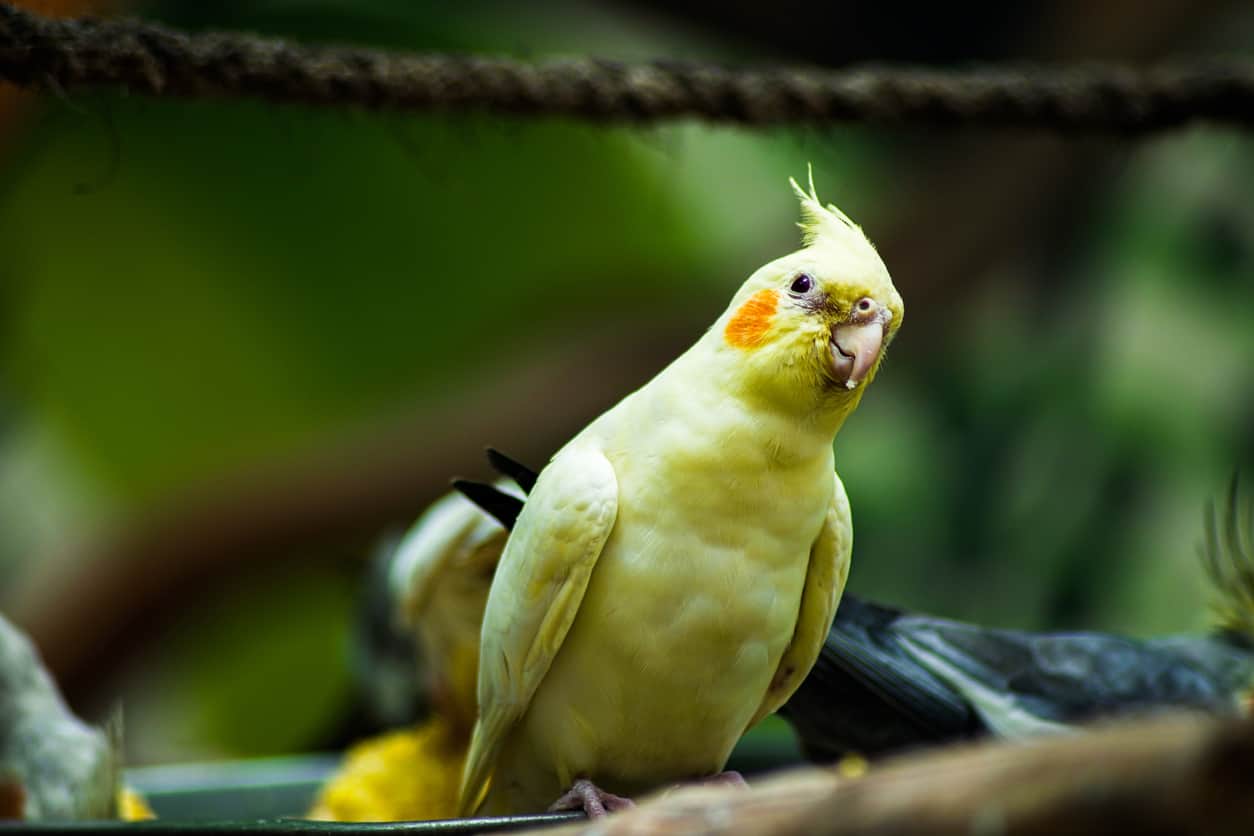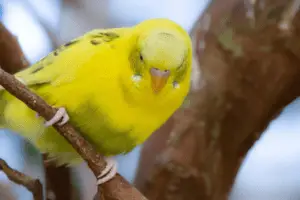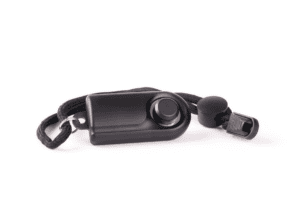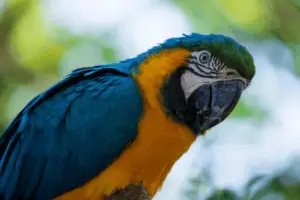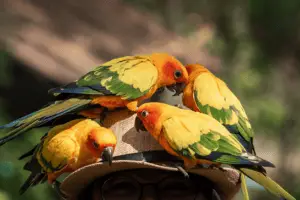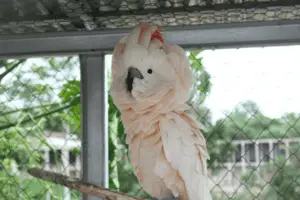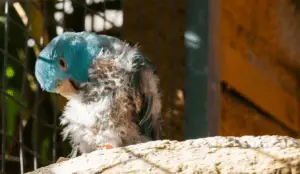Cockatiels, those charming and affectionate birds known for their vibrant crests, playful personalities, and excellent dancing skills, often exhibit a curious behavior that captivates their owners. One of those curious behaviors is beak grinding. This rhythmic motion, accompanied by a gentle grinding sound, can perplex and strike the interest of many bird enthusiasts.
But what exactly is the purpose of this strange and peculiar behavior? This article digs into the fascinating world of cockatiel beak grinding, exploring the meanings, benefits, and factors that trigger this captivating avian ritual.
Get ready to uncover the secrets behind this unique behavior and better understand your cockatiel’s well-being.
Key Takeaways
Cockatiel Beak Grinding – What Triggers My Cockatiel To Grind Its Beak?
When Cockatiel Beak Grinding Is Deemed A Concern
What To Give Your Cockatiel To Grind Its Beak On
Is It Painful For Cockatiels When They Grind Their Beak
What Noise Does Beak Grinding Make?
How To Check For A Healthy Beak
Cockatiel Beak Grinding: What Triggers My Cockatiel To Grind Its Beak?
Cockatiels, known for their playful and charismatic nature, exhibit various behaviors that can fascinate bird owners. Beak grinding is definitely one of those strange behaviors. Understanding the triggers behind this behavior can provide insights into the well-being and happiness of your cockatiel.
When a Cockatiel grinds its beak, it is associated with happiness and relaxation for the most part. You will most likely find your cockatiel grinding its beak while sitting on its perch in a comfy position. Your cockatiel may even grind its beak when it is ready to turn in for the night and get some well-earned Z’s.
A few triggers can cause your cockatiel to grind its beak. Those triggers are as follows:
- Sense of Security: Cockatiels that experience a sense of security within their environment and receive lots of nourishment, hydration, and enrichment opportunities are likelier to partake in beak grinding. Also, if your cockatiel has access to comfy bedding, perches, and swings, your bird is more likely to relax, therefore, grind its beak.
- Environment: Like reptiles, the cockatiel is extremely sensitive to its lighting and temperature. Not giving your cockatiel the lighting and temps they require can be detrimental to your cockatiel. On the other hand, by providing your cockatiel with proper lighting and a warm temperature, you may just find that your bird will start grinding its beak. Do your research before setting up any lighting and temperatures for your cockatiel. You must ensure you give your bird what it needs and not just guess. Your cockatiel does depend on you to keep it alive.
- Bonding and Socialization: Cockatiels are naturally sociable birds that thrive on social interaction, according to Avian and Exotic Animal Care. You can create a strong bond with your cockatiel by putting enough time aside each day for you and your bird to play games and spend quality time together. Do this, and you’ll find your feathered buddy grinding its beak.
There you have it! The primary triggers that cause your cockatiel to grind its beak. Let’s move on to some more info on Cockatiel beak grinding!
When Cockatiel Beak Grinding Is Deemed A Concern
We first discussed the positive triggers that can cause your cockatiel to grind its beak. This section of the article will review when beak grinding is a cause for concern for your cockatiel.
If your cockatiel is stressed or experiencing discomfort, it may excessively grind its beak. Reasons for your cockatiel to be stressed and beak grinding deemed a concern:
- Not enough room in its enclosure
- Poor diet
- Noise they are not used to or excessive noise
- Moving
- Not enough enrichment
If you notice a sudden change in your cockatiel’s beak grinding or feel there may be health concerns, you must book an appointment with your veterinarian. Some signs of health concerns for Cockatiels are as follows:
- Loss of appetite
- Not moving around
- Not talking or chirping.
- Tired looking
- Weight loss
- Discolored beak
- Overplucking of feathers
- Disoriented, they don’t act like they usually do.
- Bad sleep patterns
- Bleeding
What To Give Your Cockatiel To Grind Its Beak On
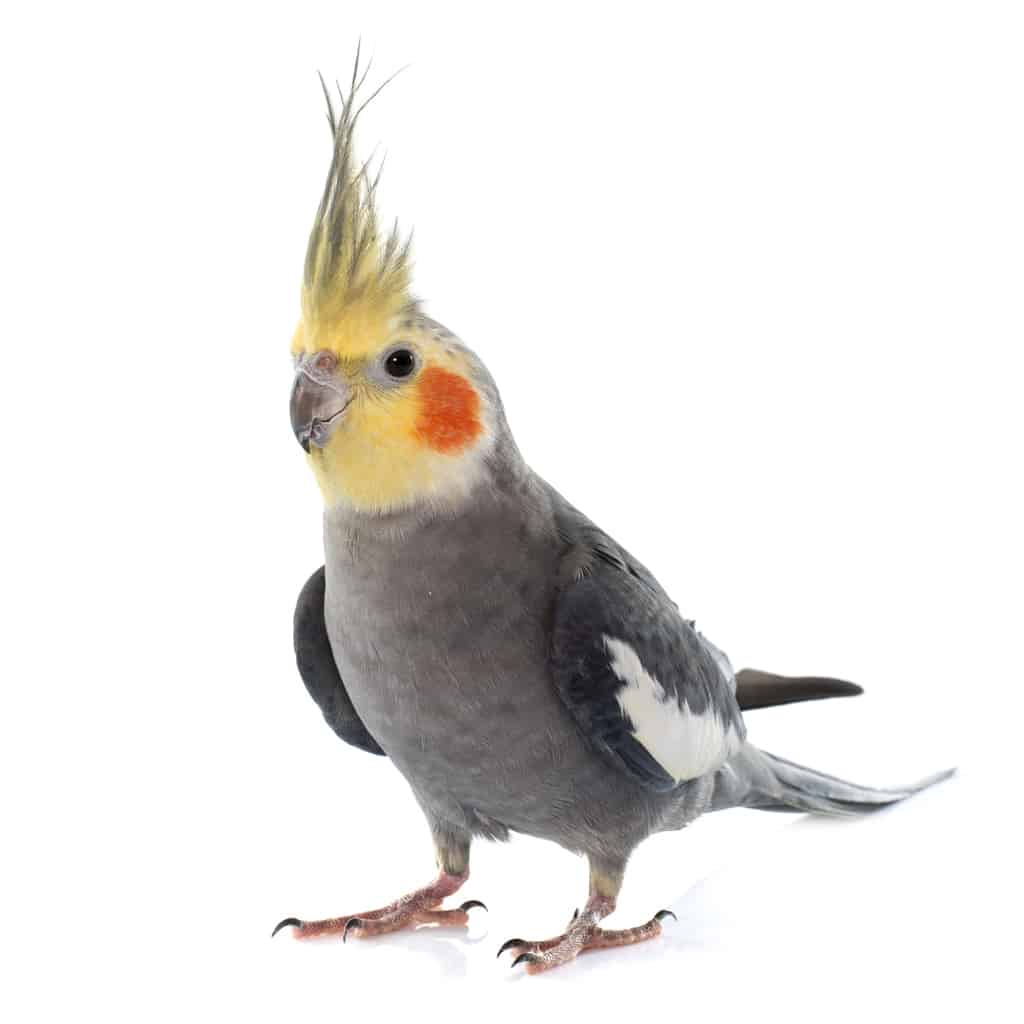
If your cockatiel is grinding its beak, giving your bird something proper to grind it on is best. You want to ensure that what you provide your bird with is safe and will do the job. We have developed a list of suitable products you can buy for your cockatiel to grind its beak safely.
- Cuttlebones/Mineral Blocks: Your local pet shop will have these two bird products. Cuttlebones and mineral blocks are the number one product for beak grinding. They provide the necessary minerals for your cockatiel and naturally wear down your bird’s beak. And lastly, your cockatiel will love these!
- Natural Wood Perches or Branches: Natural wood is the best perch for your cockatiel. The wood helps to wear down your bird’s beak naturally and is safe to use. If you decide to go with branches, look for apple, elm, ash, maple, or willow, according to VCA Animal Hospitals. However, you must disinfect and wash them to avoid fungus and insects in the branches. You don’t want to bring home any uninvited guests.
- Chew Toys: Providing your Cockatiel with chew toys gives your birds something fun to do and happy times and assists in beak grinding. Make sure you look for bird chew toys free from chemicals to ensure the safety of your cockatiel.
- Untreated Pine Cones: Pine cones are a great addition to your Cockatiels group of toys, according to Parrot Magazine. Cockatiels love them, and are a great way to help grind your bird’s beak. If you are collecting the pine cones yourself, disinfect and wash them properly to eliminate any fungus, bacteria, insects, or chemicals. The best way to clean a pine cone is to let the cones sit in warm water for forty-five minutes with antibacterial soap. After forty-five minutes, run the cones under the water tap. Next, place the cones outside in the sun to dry naturally. Lastly, give the cones a final inspection, then introduce them to your cockatiel.
Reminder: Always be present when your bird is playing with toys, just like you would with a dog. You never know when accidents will happen.
Inspect each toy regularly and look for any signs that they may be due for replacement. A damaged toy can lead to accidents, and you want to ensure your cockatiel is safe and free from damaged toys and potential injuries or worse.
Is It Painful For Cockatiels When They Grind Their Beak?
Every Cockatiel owner has heard that soft scratching noise from your bird’s cage. Some may even wonder if it is typical or if my bird is in some sort of distress. In most cases, when your cockatiel grinds its beak, it is because the bird is happy, content, and ready to sleep for the night!
Now that we know, beak grinding is a good thing. The next question most people have is, is it painful for cockatiels when they grind their beaks? When grinding our teeth at night, we feel it in the morning and let’s just say the feeling is not great. Sore jaw and headache, and feeling like we haven’t slept at all. For Cockatiels, this is not the case. According to veterinarians and bird experts, when Cockatiels grind their beaks, they do not feel any pain.
What Noise Does Beak Grinding Make?
When a Cockatiel grinds its beak, essentially, it slides its upper jaw, called the maxilla, against the lower jaw, called the mandible. The sound that results in this action is a soft, rhythmic clicking or grinding noise that varies in pitch and intensity depending on how the cockatiel feels.
When a Cockatiel grinds its beak, it is not typically loud, and you can miss it if you have other things happening around you. You may also hear soft sighs or even low vocalization while your bird is grinding.
Remember that beak grinding is standard and part of your bird’s life and tells you that your bird is happy and content. If you notice that your bird is aggressively grinding or grinding too much, you should take your cockatiel to the vet to determine if something is wrong. Another thing to look out for is if your bird is having challenges while closing its beak or if there are any signs of discomfort.
How To Check For A Healthy Beak
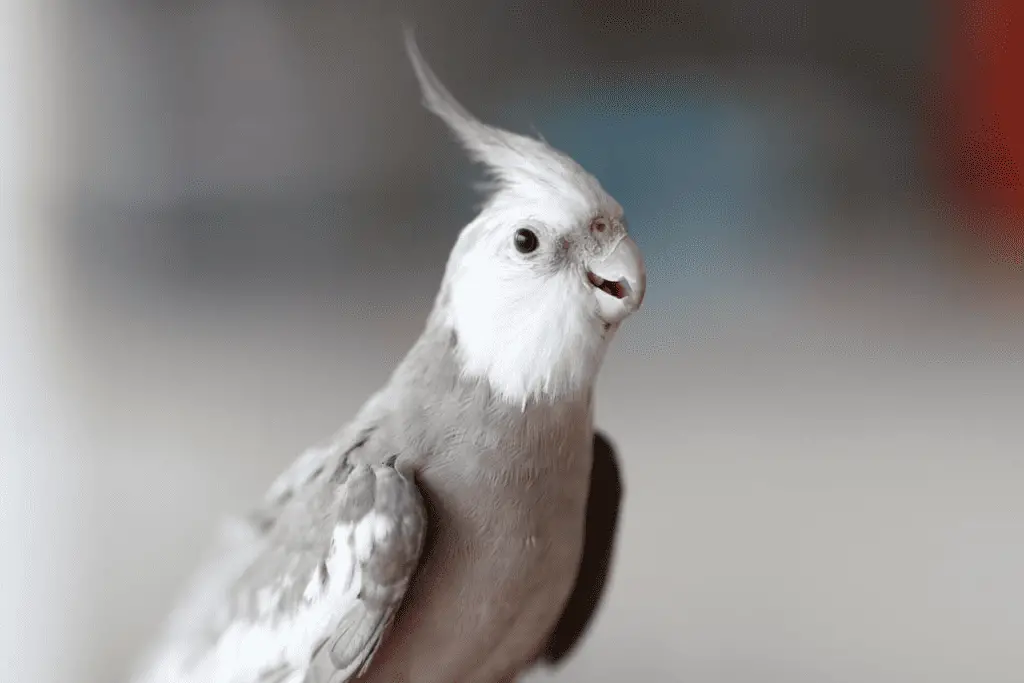
The health of your cockatiel’s beak is an essential thing to know. Your cockatiel uses its beak for many things, like eating, playing with toys, and chewing. When a Cockatiel’s beak is sore, it will avoid using its beak. We want to prevent that and ensure our bird has a healthy beak. Here is a list of signs of a healthy beak according to del mar veterinary hospital
- Appearance: A healthy beak will be symmetrical, smooth, and no discoloration. There should be no cracks or abnormalities in the beak.
- Length: The beak should not be overly long (overgrown) or excessively short. Additionally, the upper beak should align with the lower back of the cockatiel.
- Shape: The upper and lower jaws (mandibles) should align without overbite or underbite. The beak should have a smooth surface, free from rough areas.
- Texture: The surface of the beak is supposed to be smooth and free from flaking, peeling, and discoloration.
- Mobility: Your bird should be able to move its beak without issues.
- Eating and Cleaning: If your Cockatiel can eat, clean itself and pluck its feathers without any problems, you know your bird has a healthy beak.
Final Thoughts
To wrap up, when your cockatiel grinds its beak, you don’t have to worry as it means your bird is happy. That said, if your bird does not look well, or you find changes in its behavior and excessive beak grinding, it is best to check in with your veterinarian, as there may be an underlying health issue that needs addressing.
The sounds from your bird grinding its beak are typically not very loud and make a clicking and grinding noise. You may even miss it if you have a lot of noise around you.
Providing your cockatiel with proper bird toys to entertain them and help with beak grinding is vital.
You must provide your cockatiel with a healthy diet, lots of fun toys to play with, regular checkups with your vet, and enrichment to continue providing your bird with its well-being and health.
- Google Books, Why Do Cockatiels Do That?
https://www.google.ca/books/edition/Why_Do_Cockatiels_Do_That/u8TKTsPE32cC?hl=en&gbpv=0&bsq=cockatiel%20beak%20grinding, accessed May 21, 2023
- Veterinary Clinics: Animal Practice Juvenile Psittacine Environmental Enrichment,
https://www.vetexotic.theclinics.com/article/S1094-9194(15)00004-3/fulltext, accessed May 21, 2023
- PetMD: Overgrown Beak In Birds, Trimming Your Bird’s Beak,
https://www.petmd.com/bird/care/overgrown-beak-birds-trimming-your-birds-beak
Accessed May 21, 2023
- VCA Animal Hospitals, Perches for Birds: https://vcacanada.com/know-your-pet/perches-for-birds, Accessed May 21, 2023
- Del Marvet Hospital, A Happy Bird has a Healthy Beak, Accessed May 21, 2023
https://delmarvethospital.com/healthy-bird-healthy-beak/
- Animal Care & Veterinary Hospital,Cockatiel
https://avianandexotic.com/care-sheets/birds/cockatiel/#:~:text=Cockatiels%20are%20very%20social%20and,and%20egg%2Dlaying%20commonly%20result, Accessed May 21, 2023
- Pet Doctor, Birds and Stress, https://petdoctorvet.com.au/latest-news/birds-stress-identifying-managing-stress-pet-birds/, Accessed May 21, 2023
- National Library of Medicine, Grant Breeland, Aylin Aktar, Bhupendra C. Patel, Anatomy,Head and Neck, Mandible,https://www.ncbi.nlm.nih.gov/books/NBK532292/#:~:text=The%20mandible%20is%20the%20largest,that%20creates%20the%20lower%20jawline., Accessed May 21, 2023
- Parrot Magazine, Parrots Just Love Pine Cones, https://parrotmag.com/parrots-blog/918-parrots-just-love-pine-cones.html#:~:text=Pine%20cones%20of%20all%20shapes,edible%20seed%2C%20safe%20for%20parrots.
- Outside my Window, Anatomy: Mandible,https://parrotmag.com/parrots-blog/918-parrots-just-love-pine-cones.html#:~:text=Pine%20cones%20of%20all%20shapes,edible%20seed%2C%20safe%20for%20parrots.Accessed May 21, 2023

